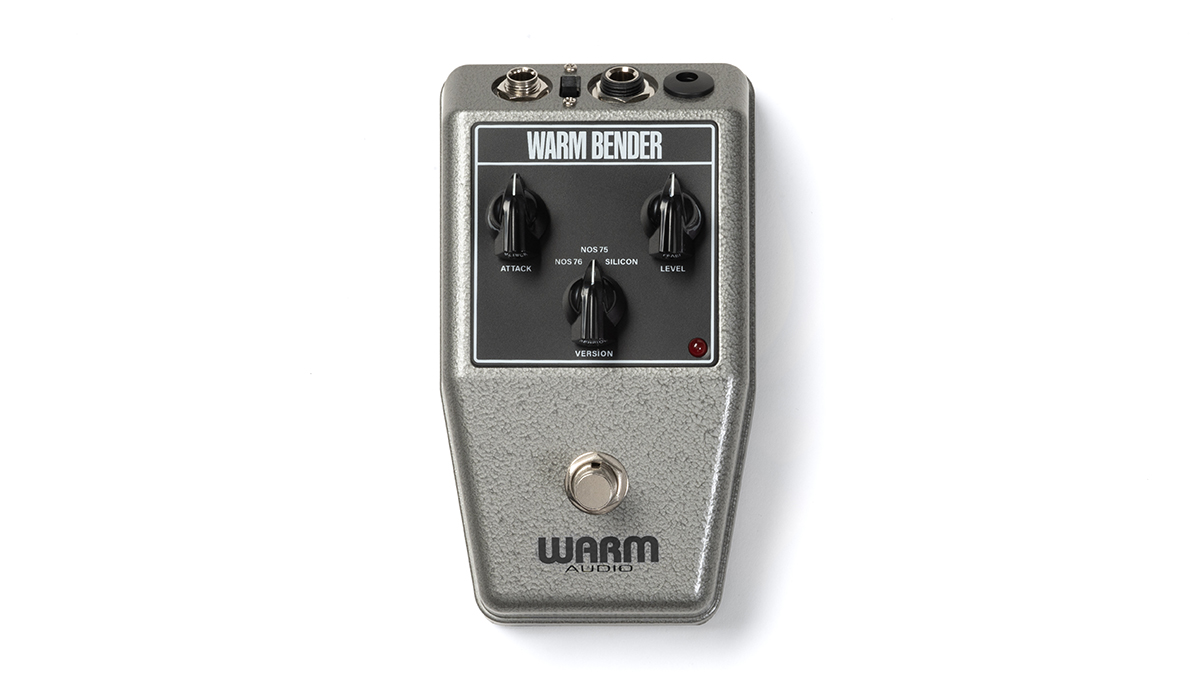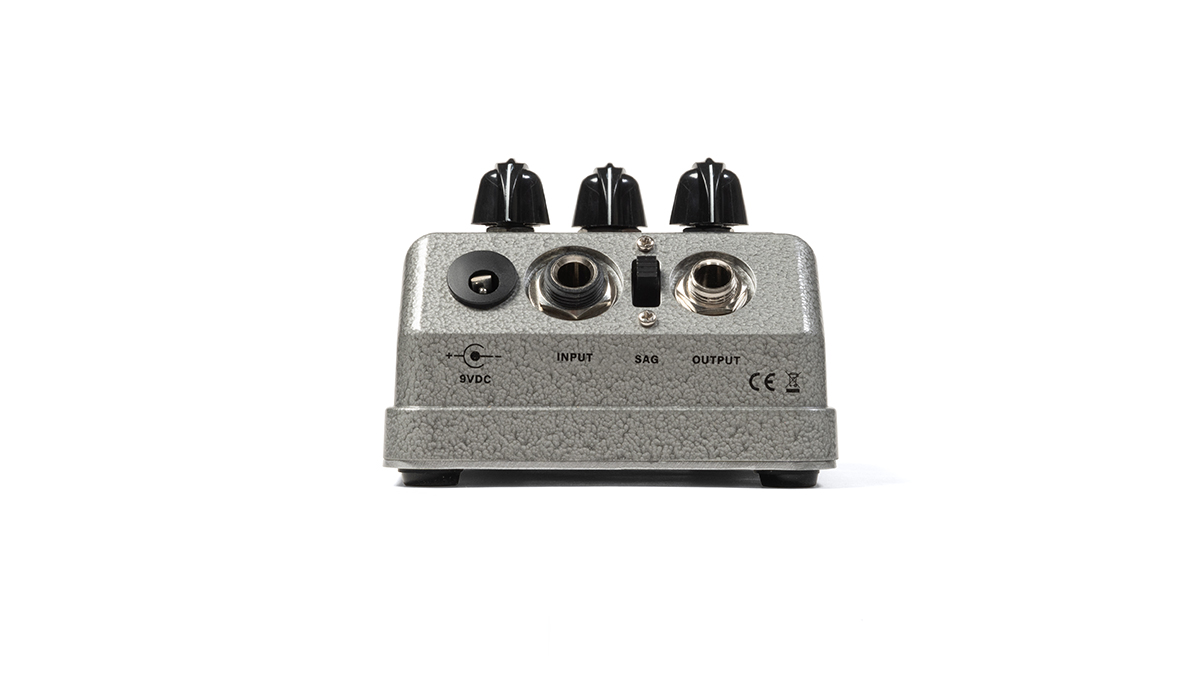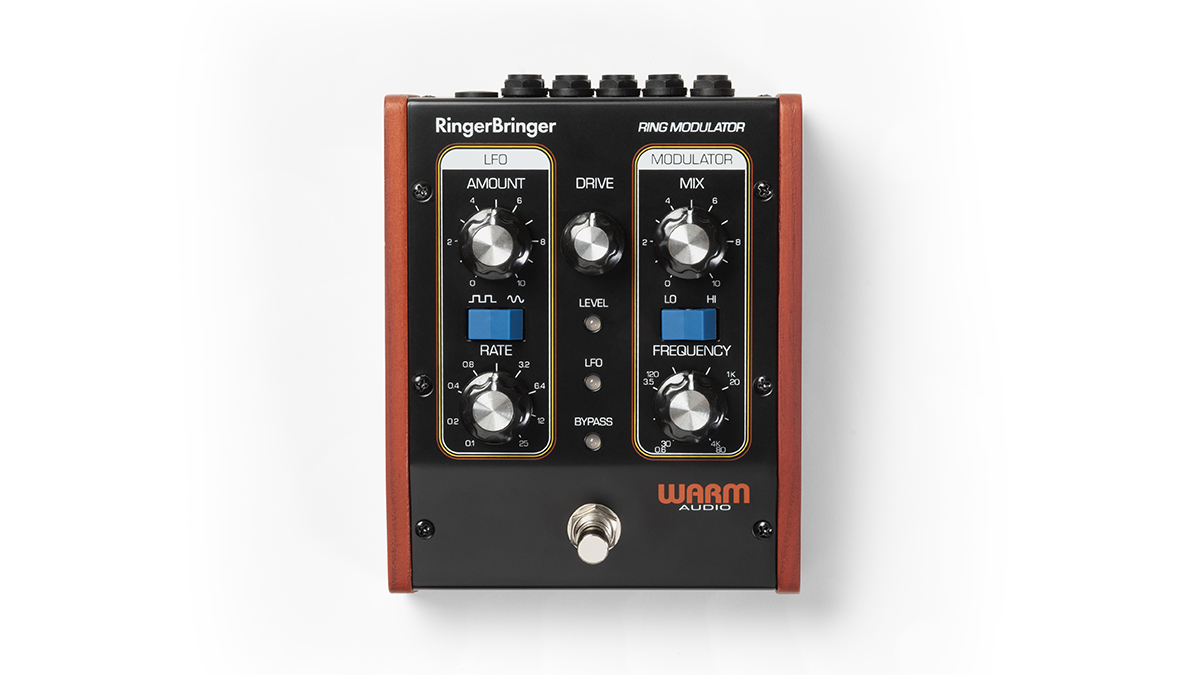Guitar World Verdict
These new additions to Warm Audio’s growing line offer a tasty variety of coveted fuzz effects for traditionalists (Warm Bender) to trippy ring modulation for defiant experimentalists (RingerBringer) at affordable prices miles below their vintage/used counterparts.
Pros
- +
Authentic classic Tone Bender fuzz tones.
- +
Three distinct fuzz circuits.
- +
Sag switch emulates distinctive “dying battery” effects.
- +
Ringerbringer is accurate repro of Moogerfooger.
- +
Versatile output/input jack section for use with external synths and controllers.
- +
Stellar ring modulator tones and effects.
Cons
- -
No easy-access battery compartment.
- -
Warm Bender loses note definition of chords at high-gain settings.
- -
Ring modulation won't suit traditional-minded players.
You can trust Guitar World
Since the company’s launch in 2011, Warm Audio has provided recording studios with reasonably priced alternatives to classic highly desirable, rare and expensive mics and processors.
A few years ago, Warm Audio added guitar effects to its product line that follow a similar philosophy, providing musicians with affordable, high-quality reproductions of discontinued classic pedals that have become prohibitively expensive on resale and vintage markets.
With Warm Audio’s recent introduction of the Warm Bender fuzz pedal and RingerBringer ring modulator, the company now offers eight impressive pedals that range in price from $119 to $219.
These two new pedals reveal that any timeline or technology is fair game to Warm Audio, with the Warm Bender being based upon the relatively simple Tone Bender fuzz circuits dating from the dawn of stomp box history in the mid and late ’60s while the RingerBringer is a reproduction of the much more sophisticated Moogerfooger Ring Modulator, which was produced up until 2018.
The Warm Bender is both a faithful reproduction of a Tone Bender with Attack and Level controls and a modern enhancement thanks to the addition of a three-way switch that selects three different fuzz circuits plus a Sag switch that drops the voltage from 9 to 6 volts.
It’s housed in a familiar-looking wedge enclosure with a gray hammered metal powder coat finish, but it’s scaled down to about half the size of the original.

The fuzz circuits consist of NOS 76, featuring new-old-stock OC76 and SFT337 transistors like the early Vox Tone Bender (used by Ron Asheton of the Stooges, John Lennon, Lou Reed, Kevin Shields, Ratatat and others, and allegedly based on the Mark 1.5 circuit); NOS 75 with three new-old-stock OC75 transistors replicating the coveted Mark II Professional circuit, most famously used by Jimmy Page with the Yardbirds and Led Zeppelin; and Silicon – a modern circuit that uses three silicon transistors instead of the aforementioned germanium transistors.
The three settings are all bona fide classic square wave fuzz tones. Typical of a Tone Bender, the mids are more prominent, which makes the effects quite useful for violin-like, singing single-note lead tones.
The NOS 76 setting has lower gain and more presence, while the NOS 75 setting is more aggressive and delivers darker, warmer character that’s similar to using a neck humbucker with the guitar’s tone knob rolled back.

The Silicon setting has added treble buzz and cut, and it gets quite spitty and static with the Sag control engaged. Like most classic fuzz circuits, chords can lack note-to-note definition, although root/fifth intervals can sound quite heavy.
The RingerBringer is pretty much a dead ringer for the discontinued Moogerfooger pedal it’s based on, housed in a nearly identical enclosure with wood sides and featuring identical top-panel control knob and rear-panel jack configurations. Even the rocker switches are the same shade of blue.

Controls consist of modulator Mix and carrier Frequency knobs with a Lo/Hi switch, LFO Amount and Rate with a square/sine wave switch and a Drive knob, while jacks include Audio In and Out, Rate, Amount, Mix and Freq jacks for use with control voltage devices or expression pedals, LFO Out and Carrier In and Out jacks for carrier signal functions with external devices.
If you’re not familiar with what a ring modulator does, the simple explanation is that it takes a modulation signal (such as an electric guitar, synth or vocal mic) that is combined with a carrier signal (usually a sine wave at a set frequency) and outputs the sum and difference to create unusual, atonal, metallic-sounding textures (the middle section of Devo’s Too Much Paranoias is a classic example of ring modulation).
The RingerBringer produces one of the best ring modulation effects for guitar, with ample body and rich harmonic character, but be forewarned that the effect is mainly for adventurous, experimental musicians, and playing one at a blues jam will likely get you permanently banned.
Specs
Warm Bender
- PRICE: $199
- TYPE: Fuzz pedal
- CONTROLS: Attack, Level
- SWITCHES: NOS 76/NOS 75/Silicon fuzz circuit, Sag on/off, true-bypass effect on/off footswitch
- JACKS: ¼-inch Input and Output, 9-volt center negative DC adapter (adapter not included)
RingerBringer
- PRICE: $219
- TYPE: Ring modulator
- CONTROLS: LFO Amount, LFO Rate, Drive, Modulator Mix,Modulator Frequency
- SWITCHES: LFO Square/Sine wave, Lo/Hi Frequency, true-bypass effect on/off footswitch
- JACKS: Audio In, Audio Out, Rate, Amount, Mix, Freq, LFO Out, Carrier In, Carrier Out, 9-volt center negative DC adapter (adapter not included)
- CONTACT: Warm Audio
Chris is the co-author of Eruption - Conversations with Eddie Van Halen. He is a 40-year music industry veteran who started at Boardwalk Entertainment (Joan Jett, Night Ranger) and Roland US before becoming a guitar journalist in 1991. He has interviewed more than 600 artists, written more than 1,400 product reviews and contributed to Jeff Beck’s Beck 01: Hot Rods and Rock & Roll and Eric Clapton’s Six String Stories.
“Sonically excellent… we found that it could be a viable substitute for our vintage 1970s pedals”: Hamstead x That Pedal Show Redwing Analogue Stereo Modulator review
“The original Jordan Boss Tone was probably used by four out of five garage bands in the late ’60s”: Unpacking the gnarly magic of the Jordan Boss Tone – an actual guitar plug-in that delivers Dan Auerbach-approved fuzz












